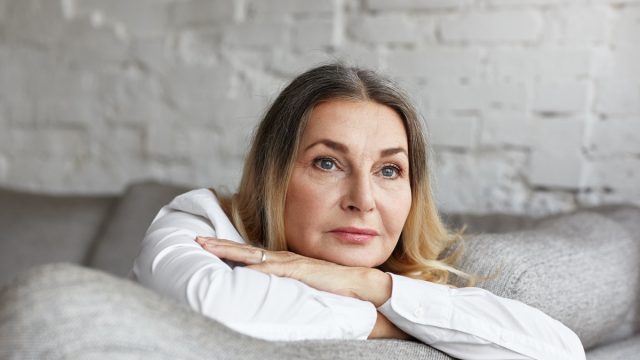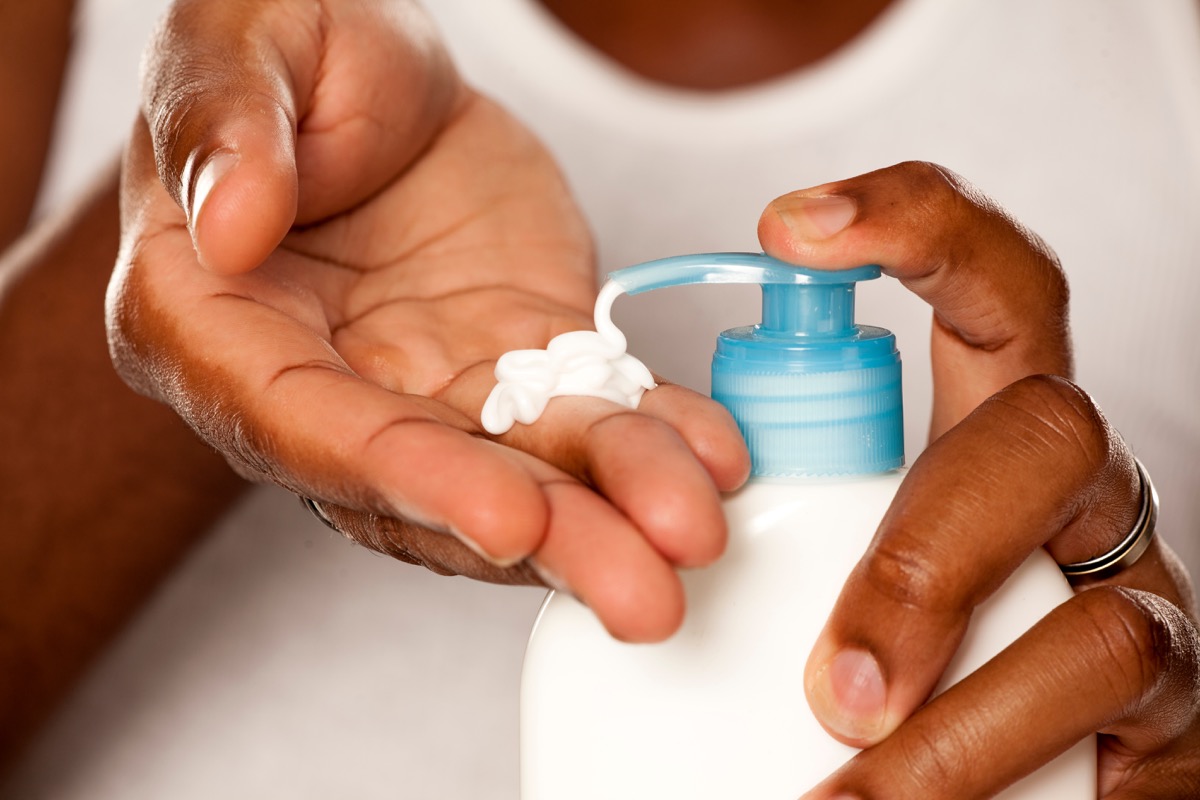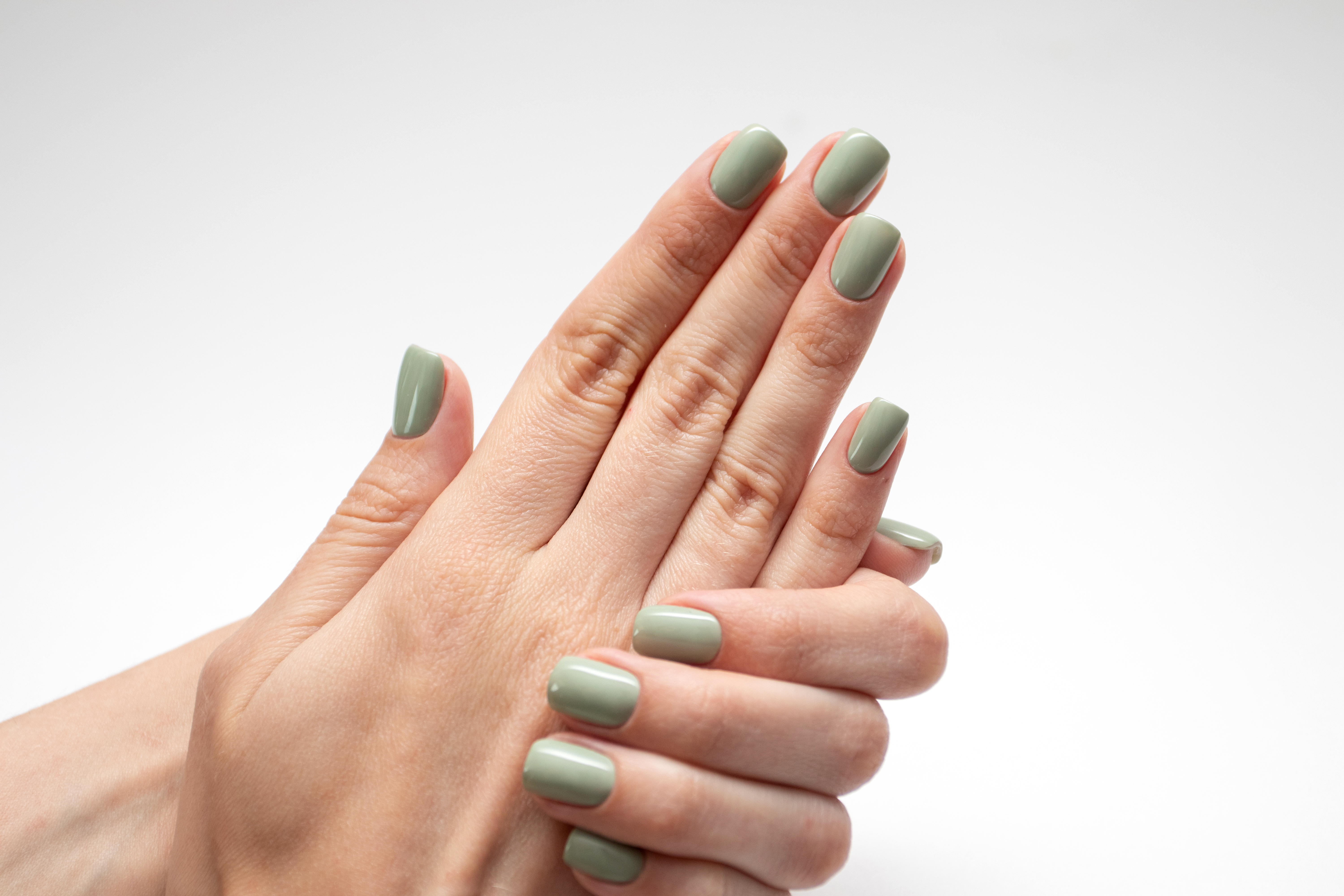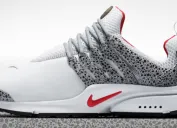This Is the Body Part That Gives Away Your Age First
Luckily, there are easy ways to reverse the clock.

You likely focus most of your anti-aging efforts on your face. You have your morning and nighttime skincare routines down pat and own a slew of sunscreens, moisturizers, cleansers, and serums to prove it. But there are other parts of the body that show obvious signs of aging—and they require an expert-approved regimen, too. Here, learn the body part that dermatologists say gives away your age first. Plus, a few simple techniques to minimize aging and reverse the clock on previous damage.
READ THIS NEXT: If You're Over 65, This Hairstyle Is Aging You, Experts Say.
Your hands give away your age first.

You likely pay most attention to your face and neck in your skincare routine—which is exactly why the hands tend to show your age first. "Our hands are 'our second face,'" says Geneva-based dermatologist Luigi L. Polla, MD, founder of the aesthetic medical center Forever Institut. "The skin is thin and delicate and impacted by a multitude of factors."
According to Polla, these factors include frequent hand washing and hand sanitizer use, weather, including UV rays, cold temperatures, and wind, and crepey skin and the loss of volume that come from aging. Because of that, "it's crucial to show your hands just as much love and care as you do your face," he says. Not sure how to do that? Let's get into it.
Minimize irritation when washing your hands.

Washing and sanitizing your hands several times a day is necessary for personal hygiene, but it can have an aging effect on your skin. Over-washing—especially with hot water, harsh soaps, or alcohol-based hand sanitizers—can dry the skin and cause irritation. To prevent this, "use mild soaps when washing your hands and apply a hydrating cream that helps support and repair the skin's barrier function after washing," suggests Polla.
Soaps with ingredients like plant oils or shea butter fit the bill. When washing the dishes—which requires heavy-duty soap—Polla recommends wearing latex gloves to protect the hands from drying ingredients.
READ THIS NEXT: If You're Over 65, Don't Wear This Scent, Experts Warn.
Invest in hand cream.

Using a quality hand cream is the easiest way to reintroduce moisture to your skin after hand-washing. "Ingredients to look for in a hand cream include glycerol or glycerin, urea, ceramides, hyaluronic acid, and various plant oils and shea butter," says Polla. "Ingredients to avoid in a hand cream include anything drying as well as anything too harsh, such as AHAs." You'll also want to avoid hand products with an alkaline pH (anything higher than seven), as they will have stripping and dehydrating effects on the skin, advises Polla.
Protect from environmental factors.

Unlike many other parts of the body, the hands are frequently exposed to the sun, wind, and cold weather. These factors can cause UV damage, dryness, and irritation—all of which make the skin on your hands look older. To combat this, Polla suggests wearing gloves all winter—even when temperatures aren't frigid—to shield the hands from the elements. Protecting from the sun is easy, too: simply rub excess SPF from your facial moisturizer onto the backs of your hands.
RELATED: For more beauty advice delivered straight to your inbox, sign up for our daily newsletter.
Consider this treatment option.

Reversing the effects of aging on your hands isn't easy, but it is possible. "You could consider hyaluronic injections performed exclusively by a skincare professional if the loss of collagen in the hands bothers you," says Polla. These dermal fillers work the same as facial fillers, restoring volume and minimizing the appearance of visible veins and tendons. "Speak with your dermatologist for more information," advises Polla.





















